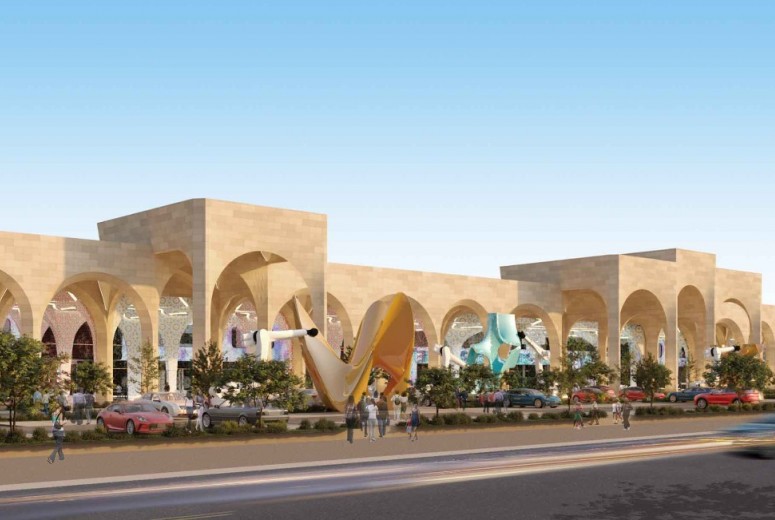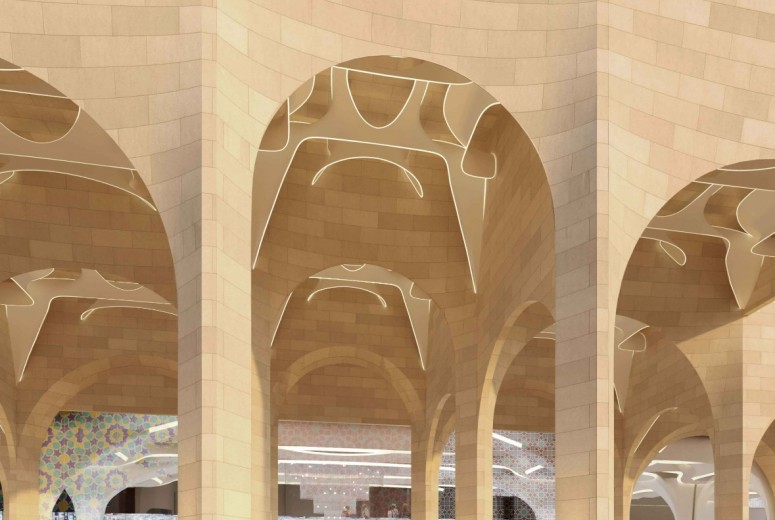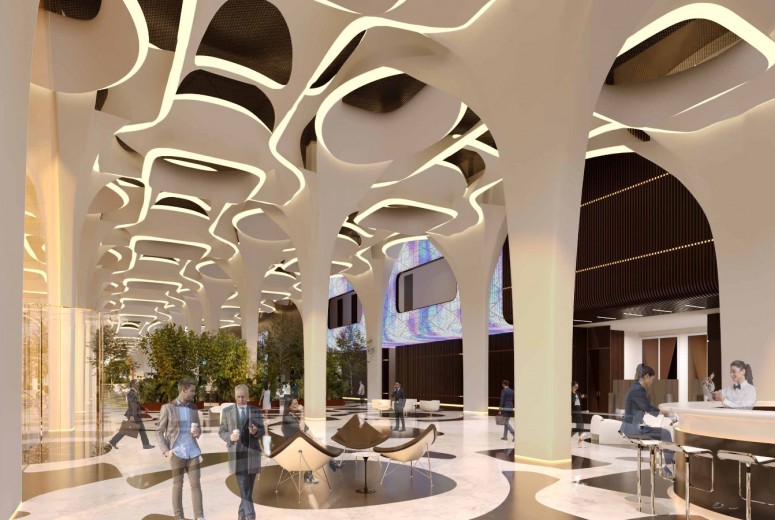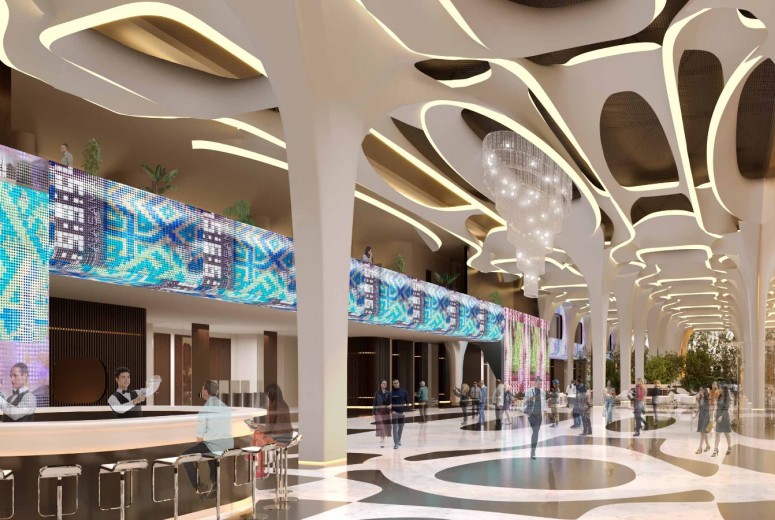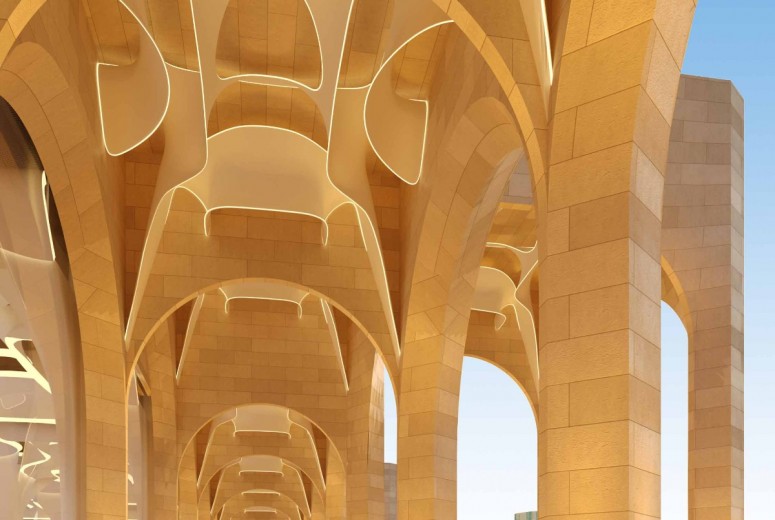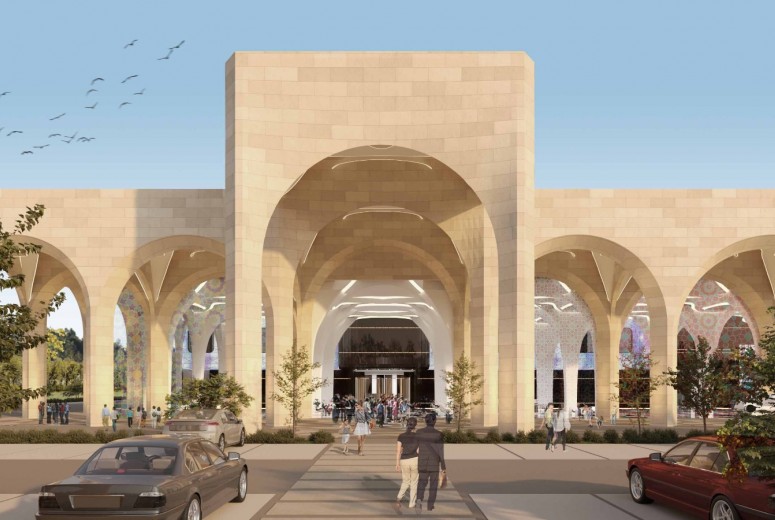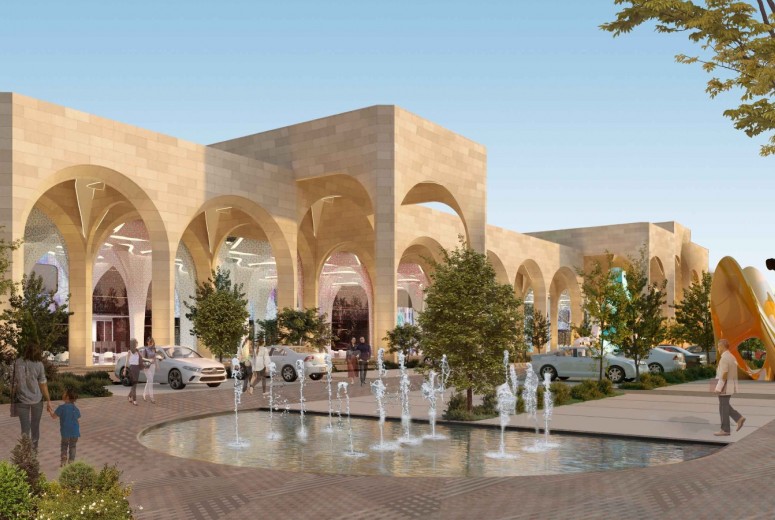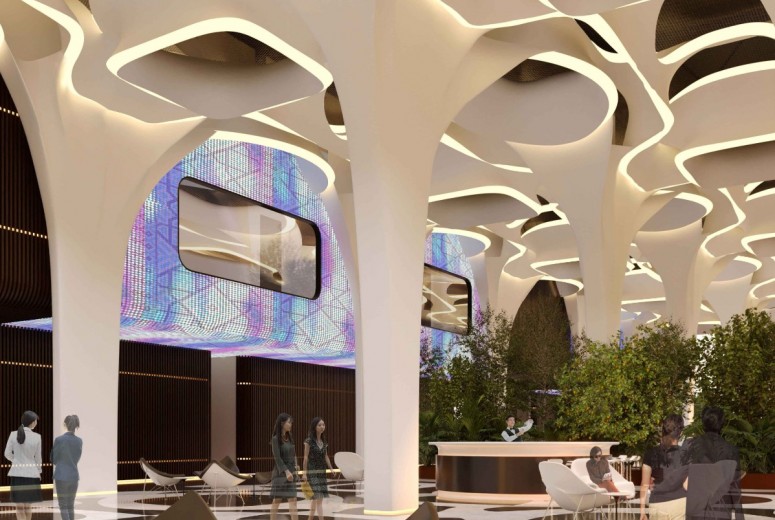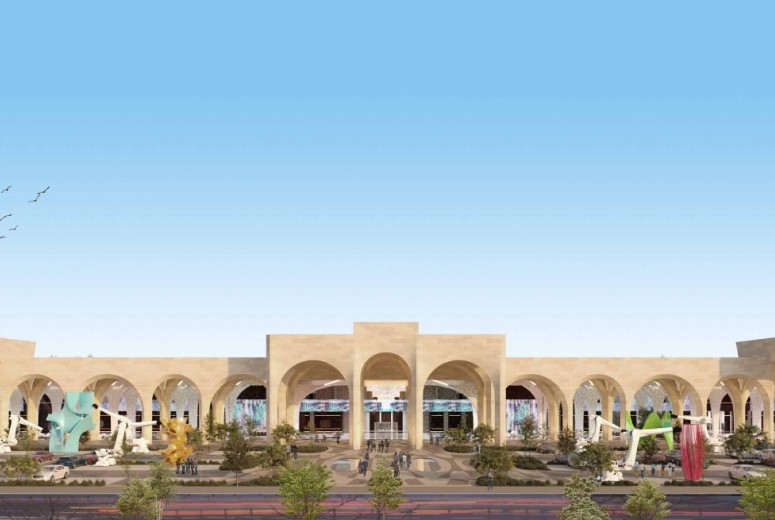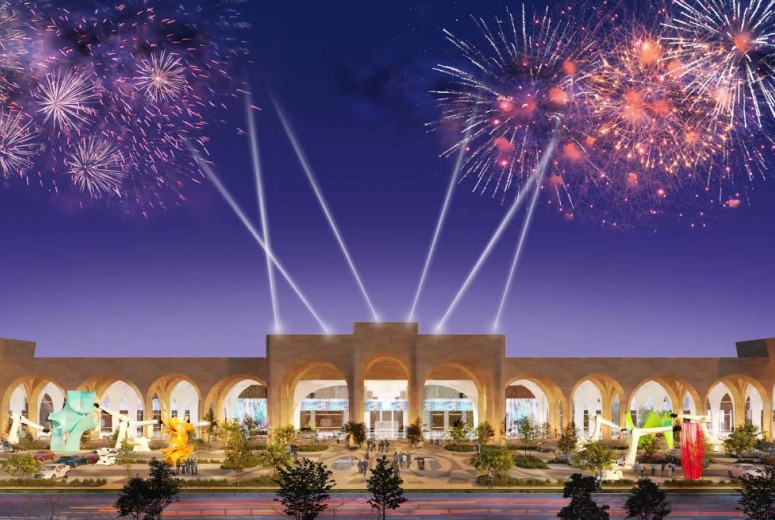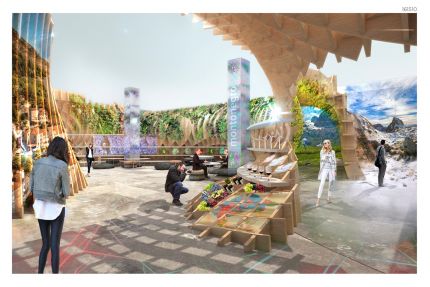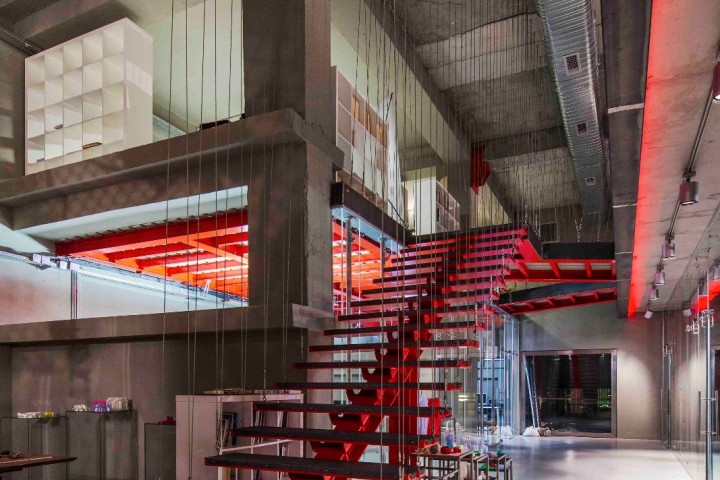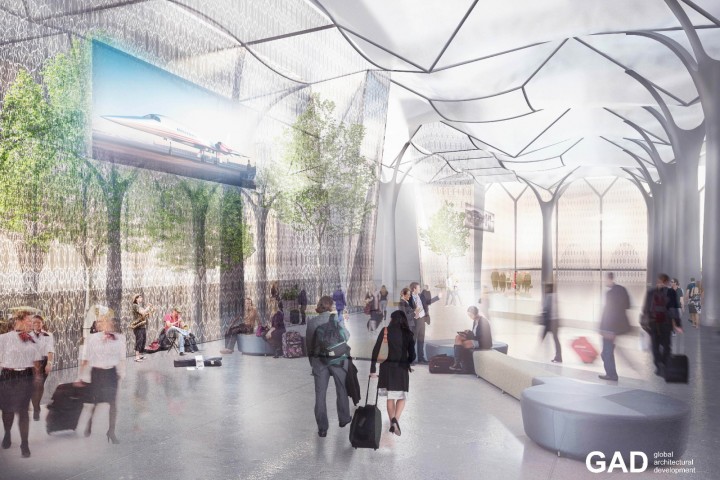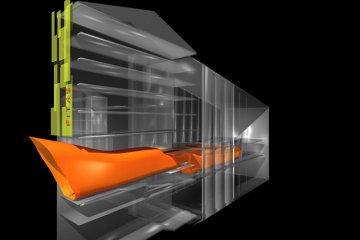Tashkent EXPO / Tashkent
Tashkent EXPO
Tashkent
Semih Acar, Oguz Cankan, Ozan Ertug, Konuralp Senol, Ogun Tuzcuoglu, Ece Nur Honca, Sarp Giray, Melih Kanbur
Public, Interiors
103000 m2
3500 m2
2023
On-going
In an architectural sense, a Conference and Exposition project must strive to create a visually stunning and engaging experience for visitors, all while maintaining functionality, sustainability, and safety. The Exposition center's pavilion should be designed to showcase the best of the exhibiting party's culture, technology, and innovation, aiming to leave a lasting impression on visitors.
Project Summary
Drawing inspiration from the rich cultural and architectural heritage of Uzbekistan, the Tashkent EXPO (Exposition Center) project successfully accomplishes the goal of providing a visually captivating and engaging experience for visitors, while also ensuring functionality, sustainability, and immersiveness. It serves as a testament to Uzbekistan's ambitious vision for the future. The building program includes exhibition areas, meeting rooms, an entrance, open spaces, arcades, facades, welcoming areas, and administrative spaces. The structure is strategically positioned to serve as a hub among the newly developed parts of Tashkent, promoting accessibility, visibility, and proximity to other attractions. The newly proposed façade, arcades, and entrance enhance GAD's design, increasing the EXPO Center's visual appeal and offering an outdoor space for visitors to relax and enjoy. This allows natural, cultural, architectural heritage, and technological innovations to seamlessly integrate into the building's design, reflecting its identity in relation to Uzbek culture. The building's structural statement draws from computational design, specifically Wolfram's mathematical methodology. This design fuses technology, innovation, and computational design with the cultural motifs of Tashkent, Uzbekistan, creating a fully immersive experience that bridges the modern and natural worlds, both contributing to the building's architectural identity. The various masses of arcade-façade and corridors adapt spaciously to the concept of an innovative architectural building, not only in terms of structure and shape but also in how it communicates and harmonizes with people and culture. Uplifting Placemaking The EXPO Tashkent project is designed to be highly context-aware, responding to and harmonizing with the surrounding environment, culture, and community. This approach involves a deep understanding of the site's physical, social, and cultural context, as well as an awareness of the broader environmental and economic factors that may impact the project. This understanding is cultivated through the study of local materials, building techniques, and cultural practices, as well as consideration of the site's topography, climate, and ecology. The project incorporates locally sourced materials and elements of traditional architecture while creating designed spaces that encourage social interaction and community engagement, thereby making a positive contribution to the community and environment.
Thriving Communities
The project's aim is to create buildings and spaces that promote the well-being of individuals and communities. It fosters social interaction and collaboration by providing public gathering spaces, pedestrian corridors, and shared amenities. Additionally, the project enhances access to open spaces, incorporating natural light, plants, local materials, and water features, which can have a positive impact on people's physical and mental well-being. Inclusivity and accessibility are also prioritized in the EXPO Tashkent project, ensuring that buildings and spaces are accessible to all individuals, regardless of physical ability or other differences.
Viable Economics
The material and construction techniques employed in the EXPO Tashkent project align with economically viable and sustainable objectives. The project embraces technology and innovation to explore new construction methods and materials that reduce costs and environmental impact. This adaptability allows the building to meet changing needs over time, ensuring its long-term viability and relevance, thereby reducing the need for costly renovations or retrofitting in the future. The circular design and resource management strategy make it possible for the building to be shared or used by multiple individuals or groups. Moreover, the project incorporates practical, creative, and visitor-friendly principles.
Healthy Planet
The Tashkent EXPO project actively pursues objectives aligned with the Healthy Planet Goal. It prioritizes several strategies, including energy efficiency, the incorporation of green spaces, the use of sustainable materials, the design of life-cycle performances, and the implementation of sustainable and locally sourced materials. In terms of social and ecological resilience, the project not only intends to use local materials but also seeks to mobilize the local community, municipality, and other stakeholders to engage in a dialogue on sustainability. The project provides guidance on how users from a wide range of sectors can utilize the space to drive accelerated climate, nature, and equity action.
Conclusion
In conclusion, a successful Conference and Exposition architectural project must strike a delicate balance between creating a visually stunning and engaging experience for visitors while ensuring functionality, sustainability, and safety. The Tashkent EXPO (Exposition Center) project, drawing inspiration from Uzbekistan's rich cultural and architectural heritage, exemplifies these principles. The project's design seamlessly blends technology, innovation, and computational design with Uzbek culture, offering an immersive experience that bridges the modern and natural worlds. It emphasizes the importance of context-awareness, considering the surrounding environment, culture, and community, and encourages social interaction, inclusivity, and accessibility. Moreover, the project prioritizes economic viability and sustainability, embracing innovative construction methods and materials to reduce costs and environmental impact. Its circular design and resource management strategy promote sharing and adaptability. Lastly, the Tashkent EXPO project actively contributes to a healthier planet by focusing on energy efficiency, green spaces, sustainable materials, and community engagement, aligning with th Healthy Planet Goal.
In summary,
The Tashkent EXPO project serves as a shining example of how architectural innovation can harmonize with culture, community, and the environment, creating spaces that inspire, connect, and endure for generations to come.
